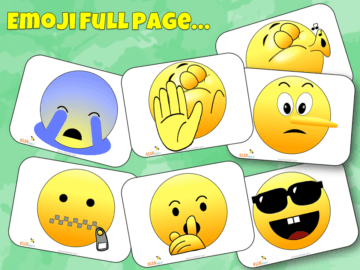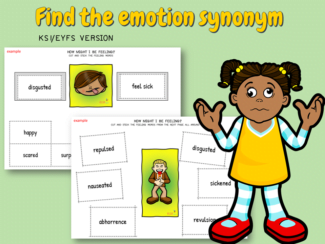SMART Targets for ELSA work
There has been much discussion and a little confusion over setting targets for ELSA Work within the ELSA Facebook group so I thought I would write this blog post.
Yes you DO need to set targets for work you do with pupils. Please refer to the ELSA Network Code of Practice
The ELSA Code of Practice is what I often refer to if I have any concerns about what an ELSA Should or shouldn’t do. I find it incredibly helpful and urge you to read it and share it with SLT or your EPs even!
I am writing this from a personal perspective and not from any official ELSA training recommendations. I thought it was important to show how I see target setting and how I have always done it. Any work you do with pupils needs to be qualified. You need to be accountable. If you don’t set targets then you have no idea really if what you have done with your pupils has had impact. Impact is that all important word that SLT and Ofsted may ask you. What difference have you made? How can you show that? What is the impact?
So when do you set targets?
I see ELSA Work as working reactively and proactively. Reactive work tends to be when you are supporting a pupil with something that has just happened such as pet dog has died, grandma in hospital ill and so on. This type of work should be ‘Child led’. In my opinion you wouldn’t set a target. You are there to comfort, support and listen. Make a few notes on what you have done. This wouldn’t be time limited because you might need to do one or two sessions or lots of sessions depending on how much support this pupil needs. I remember having one child suffered a bereavement. He came straight to me and we chatted and I shared a book with him. That seemed to be enough for him because he didn’t come back. After checking with his teacher he was ok.
Proactive work is completely different. You have been asked to work with a pupil and there is an issue. That issue needs supporting. Often the best way to support a pupil is to teach them the skills they would need to deal with that issue. An example might be a pupil with anger issues. They need to learn to regulate their anger. For this type of work you absolutely should have targets in place, otherwise you will have absolutely no evidence of the work you have done and the impact it has had. ELSAs do amazing work and you should be shouting from the rooftops that what you did has worked! You have made a difference! You can prove it!
Assessments
There are many ways to assess pupils to find where their issues lie or where their gaps are. I liken this to teaching phonics. You absolutely need to know what they know and what they can do before working with them. How can you teach phonics when you don’t know what they know already?
You need to absolutely KNOW your pupils before planning work for them. There are some assessments on the website and you can find them here. The paper copies are free! You can also use SDQ or Boxall or whatever assessments you have in your school that monitors Social and emotional learning. Someone who knows them well in school should fill them in. This would usually be the class teacher or it might be the Teaching assistant who works in the classroom. Once you have that information you can then look for gaps that need filling in. This is where you need to be SMART and plan SMART, beginning with targets. When you have finished your block of work with the pupils you can then reassess, work out the difference and ‘hey presto’ you have IMPACT. It will show clearly that your work with the pupil has worked.
SMART Targets
So what are SMART targets. In a nutshell smart targets are targets that are personal to the child, that are specific, measurable, attainable, realistic and that they can achieve in a timely manner. So they need to reach the target by the end of a set period of time.
There are many ways to write these and I am going to show you my way. You may be taught differently on your course and in that case keep going with what you know.
I remember how to set a target by using WHO, WHAT AND WHEN
WHO is the target for?
This is literally the name of the pupil eg. Adam
WHAT is the desired outcome?
This is what you want them to learn so Adam will recognise 3 of his triggers for anger
When does the desired outcome need to be shown?
This is when you want this desired outcome to show so it might be when Adam is asked by an adult. Adam will recognise 3 of his triggers for anger, when asked by an adult.
Some people do add more to that target and you may well have been taught to do this. This will give a success criteria such as Adam will recognise 3 of his triggers for anger, when asked by an adult, 3 out of 5 times over a 4 week period. Personally I don’t do this but I do know what I would consider a success and would know the set period for intervention. Also I don’t feel this is friendly enough to share with a child. It is a bit too wordy!
You can swap things round a bit too so you could start with WHEN – when asked by an adult, Adam will recognise 3 of his triggers for anger.
The main thing is your target is personal to the child, it is something they can achieve in a set time. So not too easy and not too hard.
You can share this target with the pupil. I do know someone in the ELSA Facebook group who gives her children a bookmark with their SMART target written on. It is good for pupils to KNOW what they are working on.
Planning work based on the target
Once you have your main target then you may have 6 or more sessions to fill in, in order to for that child to achieve that target. This is where the resources on this website can be invaluable and I urge you to have a look. So for Adam who needs to recognise his triggers for anger we could break that up into smaller chunks. He might need to learn about the basics of anger. Identifying an angry face, matching scenarios to the correct emotion, learning what triggers are, learning what his triggers are. Practising identifying triggers attached to different scenarios or things that have happened to him in the past.
You might even find the triggers are something unrelated to anger and the fact that he is incredibly sad about something is a trigger for his anger. Once he knows his triggers then you would be looking at the next SMART target if you were to continue working with him and be planning for another set intervention with him. He might however need a bit of practice identifying anger triggers without you there to help. So half a term to help him do that with support in class would be helpful before the next series of sessions.
Most importantly you will KNOW whether he is being successful in identifying his triggers because you wrote the SMART target and you assessed him. You might find with assessments that other areas improve too. This is probably due to the fact that you are providing a safe base for him and allowing him to talk and express himself. Your work is much more than a target but by aiming for a target you are keeping your work focused. We all know that things happen and things don’t always go to plan but you know that in the next session you will continue with that focus of teaching Adam to recognise his triggers for anger.
Hope that helps a bit!
Here are some examples I have done for SMART targets

You can download this from here: SMART
For a huge list of learning objectives please see this blog post. Click the image to take you there.
Other Resources you will love!
EMOJI Full page posters – Item 176
Emoji Full page posters. These could be printed out as posters but also could be printed as a booklet or as cards. Just use your…
£2.00
Find the emotion synonym KS1/EYFS – Item 432
Find the emotion synonym - There are 2 different versions included in this pack. One for KS1 and one for EYFS The KS1 version has…
£2.50
Sad Simon Resource Pack – Item 284
The Sad Simon Resource Pack is to help children understand the emotion of 'sadness' and was requested from a Reception teacher. Sadness is one of…
£2.00







Do you have any similar guidance or links to any for children in early years.
Thank you 🙂
Hi there Maria, This is all I have which is quite extensive and explains how to set SMART targets for ELSA work. Not sure how that would be adapted for early years. That is perhaps up to you based on the knowledge of the children you work with. Best wishes Debbie
Hi Debbie, I have just read your piece on setting SMART targets which is very clear. I wanted to ask how teachers can support the pupil in class to achieve this target? I was reflecting on your example of Adam. How can the teacher provide support with this as many times children are being referred by class teachers.
Thank you
The easiest way is to have a system in place to feedback what you have been working on with the child. If the teacher or TA in class are fully informed it should be easy enough to reinforce learning with the child at every opportunity.